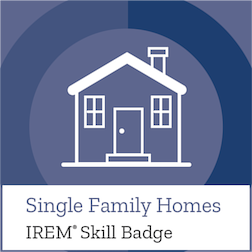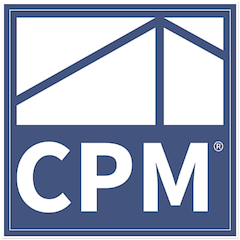REAL ESTATE AFTER COVID-19
Gaston Reboredo • April 22, 2020
This is a subtitle for your new post

Future of Real Estate after Covid-19
No question that the Corona Virus has changed our lives not only in the United States but all over the world. The “new normal'' as some people refer to our new life after this virus, because there is certainty our lives will not be the same after this crisis. All of us will experience changes in many aspects of life, travel, dining, public gatherings, the way we shop, public transportation, concert halls, sporting events and the list goes on and on. A vaccine is not expected to be available until 2021 and the Center for Disease Control expects a resurgence of the virus in the fall of 2020 so it is not over. It is not the intention and certainly beyond its scope, that this presentation discusses how this virus originated, if it was a mistake or the first steps on a planned biological war, an answer to this will further affect our lives on this planet. Hence, we only discuss what relates to our field, real estate investing.
How real estate has been affected and will continue to be affected if the crisis, even on a lesser extent, remains in place in our society. Here is my view by property sector and type in a very summarized way.
Housing:
No question that in the short term the housing market will be affected. With an expected unemployment rate of about 30% to 40%, as some economists predict, in the coming months, there is no question that the universe of buyers will shrink and the rental market will expand. Inventory of homes should increase as well as foreclosures and distressed properties. The forces of demand and supply will force prices down. Mid term, if inflation remains low as well as interest rates, which everybody expects, the market should stabilize as construction of new homes has been halted and population growth continues at the expected pace. Like any market, this brings opportunities for some and problems for others. The trend to shift to multifamily living, propelled by millennials and baby boomers, is expected to continue although it is not clear how the population will look at amenities, access and resident interaction in Condominiums and Rental Communities. Single family rental investment will also be positively affected despite the short term rent collection issues that may exist.
Retail: The sector that prior to this crisis was re-inventing itself due to the growth of e-commerce and changes in customer behavior. About 5 years ago customers started to look for an overall experience and true value proposition. Retail centers that offer unique retailers and products, entertainment, great dining and/or good value for the products sold, were the ones most likely to survive and do well. Big boxes were in decline as well as department stores and less need for the square footage at the store was already needed. Conversion of big boxes to smaller stores was already taking place and it was believed that brick and mortar retail was not going to disappear but had to change the customer experience that consumers were demanding and of good value. Centers that were part of mixed use developments or that instituted big changes were doing well. In today’s environment of big data, most corporate decisions are data driven. The amount of data that one can collect from consumers these days was incomprehensible a few years ago and retailers should use this data to make the right decisions. Smaller neighborhood centers that are mostly anchored by a grocery store and/or pharmacy had good positioning although many experts expected big developments in online grocery shopping with a strong delivery service. Pharmacies started to change as health centers, offering in-store walk-in clinics, more groceries and lab services trying to re-invent themselves. Retailers knew that e-commerce was expected to grow exponentially and were trying to adapt and change their business model based on data driven decisions. Covid-19 just accelerated this process. More and more people are shopping online and the segment is growing faster than expected. Pharmacies such as Walgreens and CVS are offering 1 to 2 business day free prescription delivery. Many grocery stores are offering delivery services, some at an additional cost, something that Publix supermarkets pioneered about 10 years ago and did not work out, the cost of being too visionary or understanding the future too well before it comes. The new service of curbside pick up that Walmart, Target and many groceries are offering is a step in between but we expect home deliveries to increase in groceries, pharmacies and online shopping will also continue to increase, in short e-commerce will continue to grow at an unanticipated pace.
The mandated shelter in place rules forced businesses to close for over a month in many places, laying off or furloughing personnel. Several businesses and many restaurants will never re-open. Others will have financial problems when they need to apply rules of physical distancing in bars and dining rooms (less tables, larger separation between clients), resulting in less customers per day but with the same operating costs. Many will not survive. How this will affect vacancy, rents and shopping center traffic is still a question mark, we see an uncertain future for retailers and owners of shopping centers and malls. It has been announced that JC Penny may close its doors, Macy’s, Nordstrom and many others are restructuring debt and maybe considering bankruptcy.
Office: In the last 10 years square footage of office space per employee has been declining due to advances in technology. Working from home or shared spaces, videoconferencing, advances in communications and bandwidth of almost all internet providers (as well as fiber optics) has shown employers less need for physical office space (less operating cost) and increase in productivity (less time and money wasted in employees commuting to and from home to the office location as well as happier employees). The growth of virtual offices, shared offices, has been exponential as well. Concepts such as Regus, WeWork and many others provide a business presence and the ability for face to face meetings when needed in hundreds of locations worldwide. Most companies are no longer confined to a “downtown location” and the trend was less and less physical office and more and more shard spaces and telecommuting.
With Covid-19 forcing almost everybody to adapt to a way to work from home, showed many people they could do things they never thought were able to do, increase productivity and employers are more aware of the potential in savings. Especially when children can return to schools (we do not see a big increase in remote learning with the exception of Universities and probably now high school) the work environment at home becomes more professional and conducive for business operations. Also the shared office space around the corner is cheaper and closer to home so whoever cannot work from a work office has other flexible possibilities. Therefore we will see less and less demand for office space and the trend of smaller offices in intelligent buildings with great amenities and shared spaces, in urban and suburban markets, to continue and increase.
Industrial and Warehouses: The demand for Distribution centers has been increasing in the last 20 years. First the globalization process of the last decade has been demanding better distribution of products and more storage space and cargo consolidation facilities and operations. E-commerce has been another factor increasing the demand for industrial/distribution properties. Logistic operations are demanding better spaces with more technology. Taller buildings, more column spacing and integration of latest technologies are important factors in the current design of buildings. Based on all our discussion in this brief article we expect that this sector will experience the highest growth in rent, demand and value. Often called the most recession proof property type, now more than ever well designed and located distribution/warehouse properties will be well positioned as good investment properties. As e-commerce continues to grow, especially with the push given by this crisis, short and long term demand of this property type will increase but its design to fit the needs of fabricators and distributors will be very dynamic, now more than ever. As technology develops and the consumer demands a real time buy today and deliver tomorrow kind of service, flexibility to adapt to faster and excellent service levels is essential and buildings may be tailored to fit some operations but most need to be versatile.
Covid 19 will bring, at least in the United States, a “back to home” approach of manufacturing, at least for many essential and/or tactical products which will increase demand for industrial facilities as well.
We need to see how we recover from this crisis and how and when the local and global economies get back on track. What is concerning is the national debt level and recent spending.
Gaston Reboredo CCIM CPM GRI
Broker
Florida Property Management Services LLC













